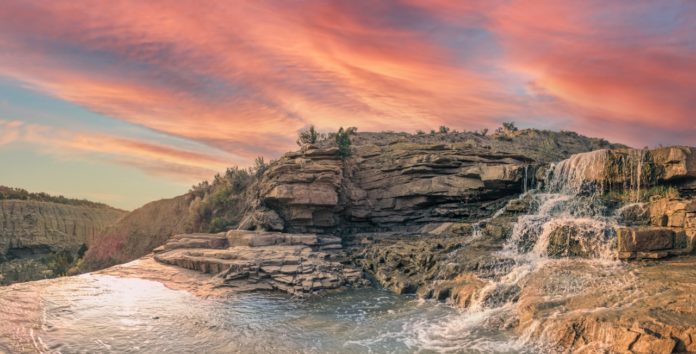CARBON COUNTY, Utah (ABC4) – For visitors from both Utah and abroad making their way from the Salt Lake Valley to the red rocks of Moab, making a stop along the way might be worth your while.
That’s what tourism officials from the Carbon Corridor are pitching to adventure-seekers.
“A lot of people don’t know a lot about us,” Carbon Corridor Tourism Specialist Tina Henrie says to ABC4.com. “A lot of people still see us as a place to stop and get gas.”
While, yes, there are places to fill up, there is far more to the Corridor than just a few gas pumps. Henrie feels the area is one of the state’s hidden gems.
“We’re just perfectly fit right in the middle,” she says of the area’s location, right in between the Wasatch Valley and Moab, with another tourism hotspot, Grand Junction, Colo. just two hours away. “People can spend an hour here, they can spend a day, they can discover us and spend a weekend.”
She says it’s not uncommon for passersby to notice the area and end up making the detour the central focus of their trip to some of the better-known national parks and features further down the road.
The Carbon Corridor’s premier attraction, she boasts, is Nine Mile Canyon, which has been dubbed the “World’s Largest Outdoor Gallery” due to its collection of Native American petroglyphs on the canyon walls. And here’s a fun fact, the Nine Mile Canyon is actually not nine miles long. It’s longer. It received its name after a topographer on a government-funded expedition down the Green River drew a nine-mile triangulation on a map, calling it Nine Mile Creek, and later Nine Mile Canyon. The name stuck.
“You can do the canyon as fast as you want, or as slow as you want,” Henrie explains. “I tell everyone to at least plan six to seven hours to just take their time and look at the pictograph the petroglyphs that are available in the canyon.”
While the Corridor has made its name on its outdoor adventure offerings, like Nine Mile Canyon and Gordon Creek Falls, a scenic waterfall found on an easy-to-manage trail, and an elite fly-fishing scene at Schofield State Park, even those who prefer the comfort of more modern-aged fun can find a good time in the region.
It’s an Instagrammer’s paradise.
“I would recommend spending some time in Helper’s historic Main Street, they’ve undergone some really great revitalization,” Henrie suggests. “Just looking at the old buildings, there are just great photo opportunities there. Even if some of the businesses aren’t open, people are stopping there to take photos.”
The photo ops don’t stop when the street lights come on either. Helper has also been listed by the International Dark-Sky Association as one of the best places to enjoy a starry night, free of light pollution. Heading to the cemetery at night, which sounds extremely spooky, is the best place to go stargazing, according to Henrie.
With plenty more to offer, including a dinosaur lover’s playground at the Cleveland-Lloyd Dinosaur Quarry near Price, the bizarre, other-worldly hoodoos at nearby Goblin Valley State Park, and a large-scale shooting range that features a cowboy action town, the Corridor is becoming much more than just a stop in the road. It’s becoming a destination of its own, thanks to pushes from state leadership officials.
“I think we’re getting more recognition from the state,” Henrie says. “Congressman [John] Curtis is very aware of our area, he visits like twice a year. Governor Cox is very familiar with our area. Our state representatives are always pushing for rural but the state and the governor’s office is really starting to recognize rural communities.”
So yes, if you’re heading to Moab from Salt Lake, you might stop for gas in the Carbon Corridor. However, staying a while longer to see more of the area could feel like a vacation of its own.
Credit: Source link

































